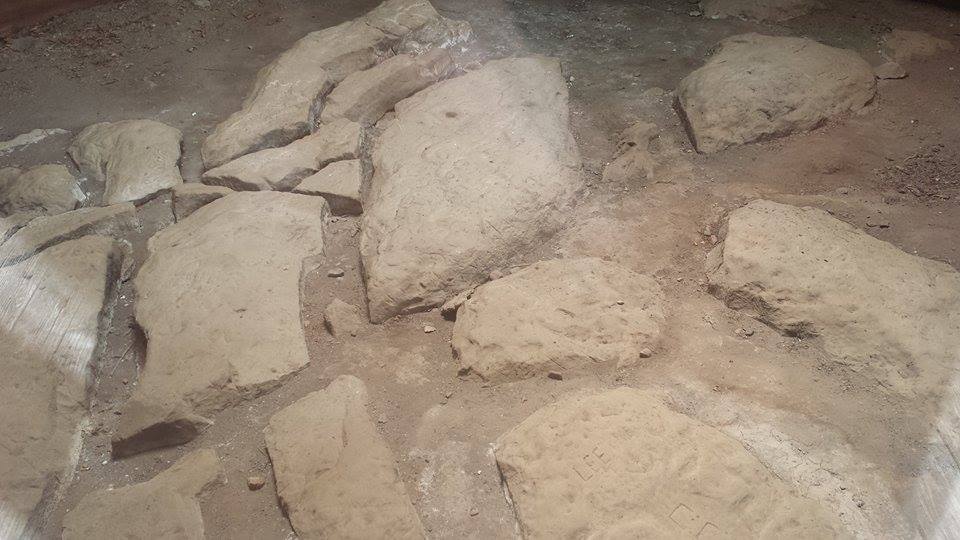Petroglyphs at Thousand Hills State Park
The Ioway, Missouria, and Otoe were not the first tribes to inhabit the area of Northeastern Missouri. In the years before these three tribes arrived, around 1100 C.E. to 1600 C.E., a Mississippian Culture tribe was present. This tribe was of the Southeastern Ceremonial Complex and is believed to have created the petroglyphs pictured to the right and below. Petroglyphs are images carved into rocks. The petroglyphs at Thousand Hills State Park are one of the few items created by Native Americans that is still present in the Kirksville landscape.
The Mississippian Culture tribe that is believed to inhabit this area is the Oneota. Some scholars believe that the Ioway, Missouria, Otoe, Ho-Chunk, Ponca, and various other tribes were descendants of this nation. Additionally, while the Oneota tribe shares some characteristics with other Mississippian cultures such as those found in Cahokia, they are considered a distinct nation.
Sadly, as can be seen on the picture to the right, there has been some defacing of these petroglyphs as people have carved their names into the rocks.


Sources:
Hirst, K. Kris. “The Oneota Culture – Last Prehistoric Culture of the American Midwest.” ThoughtCo, Jun. 22, 2018, thoughtco.com/oneota-culture-of-the-american-midwest-167045.
“Thousand Hills State Park Petroglyphs Archeological Site – Kirksville, Missouri.” Waymark, 29 June 2013, www.waymarking.com/waymarks/WMHE85_Thousand_Hills_State_Park_Petroglyphs_Archeological_Site_Kirksville_Missouri. Accessed 15 November 2018.